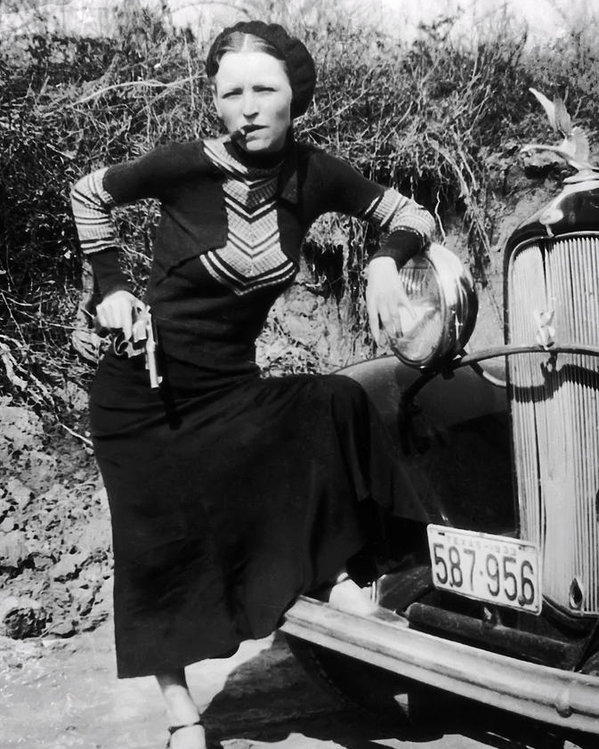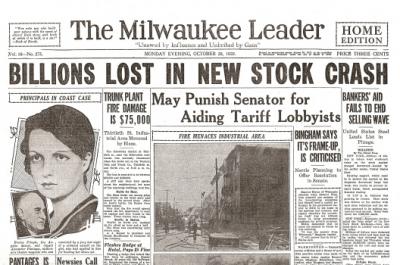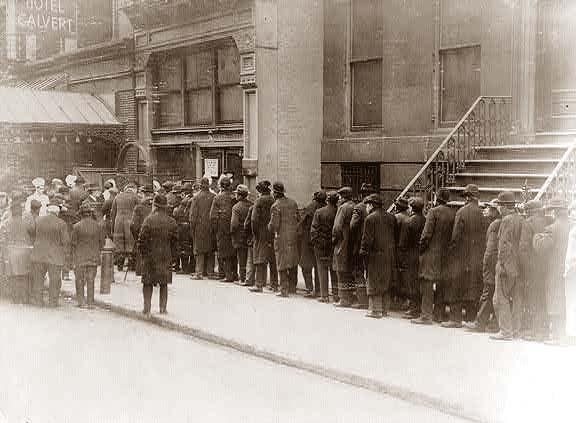
During the Great Depression, unemployment was high. Many employers tried to get as much work as possible from their employees for the lowest possible wage. Workers were upset with the speedup of assembly lines, working conditions and the lack of job security. Seeking strength in unity, they formed unions. Automobile workers organized the U.A.W. (United Automobile Workers of America) in 1935. General Motors would not recognize the U.A.W. as the workers’ bargaining representative. Hearing rumors that G.M. was moving work to factories where the union was not as strong, workers in Flint began a sit-down strike on December 30, 1936. The sit-down was an effective way to strike. When workers walked off the job and picketed a plant, management could bring in new workers to break the strike. If the workers stayed in the plant, management could not replace them with other workers. This photograph shows the broken windows at General Motors’ Flint Fisher Body Plant during the Flint sit-down strike of 1936-37.

World War I veterans block the steps of the Capital during the Bonus March, July 5, 1932 (Underwood and Underwood). In the summer of 1932, in the midst of the Great Depression, World War I veterans seeking early payment of a bonus scheduled for 1945 assembled in Washington to pressure Congress and the White House. Hoover resisted the demand for an early bonus. Veterans benefits took up 25% of the 1932 federal budget. Even so, as the Bonus Expeditionary Force swelled to 60,000 men, the president secretly ordered that its members be given tents, cots, army rations and medical care.
In July, the Senate rejected the bonus 62 to 18. Most of the protesters went home, aided by Hoover’s offer of free passage on the rails. Ten thousand remained behind, among them a hard core of Communists and other organizers. On the morning of July 28, forty protesters tried to reclaim an evacuated building in downtown Washington scheduled for demolition. The city’s police chief, Pellham Glassford, sympathetic to the marchers, was knocked down by a brick. Glassford’s assistant suffered a fractured skull. When rushed by a crowd, two other policemen opened fire. Two of the marchers were killed.
These two pictures are images that show that the people of the nation had tolerated enough. Not enough was being done to help the economy and the government wasn’t quick enough. In the first image, the workers are taking matter into their own hands by protesting the big factories that were treating them unfairly. The second picture depicts the same concept, but consisted of the war veterans who wanted to collect their bonus checks that were owed to them. In both sceneries, those in power took advantage of them.
































